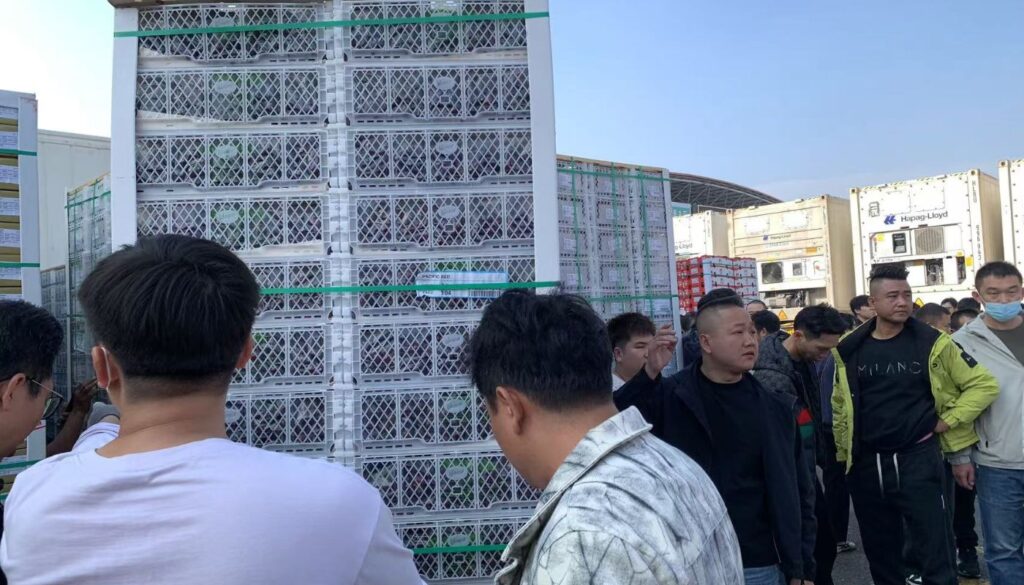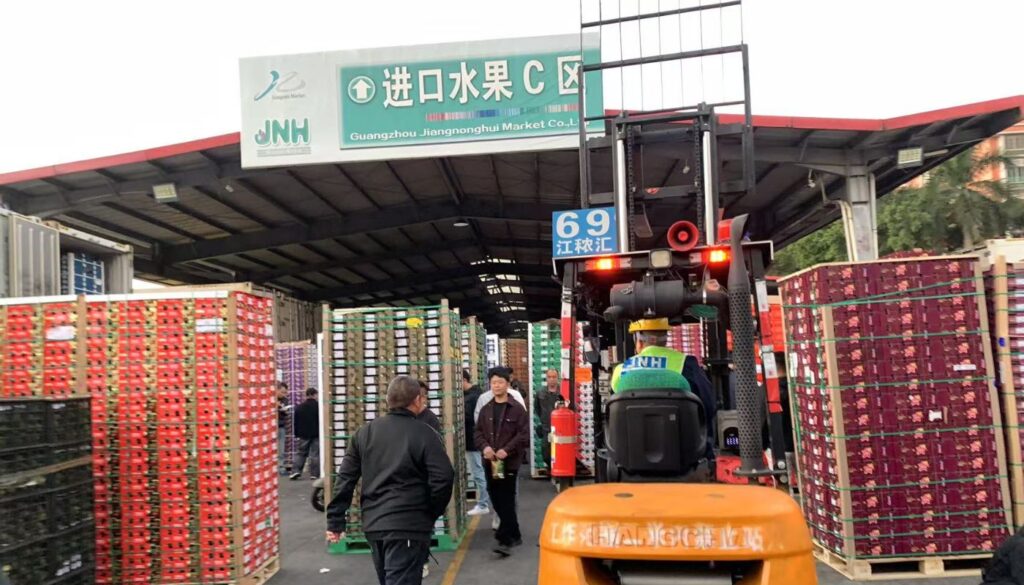By: Hector Garcia O. Co-Founder and General Manager. Diagnofruit Laboratories Ltda. [email protected]
Although there is no clear idea of the dominance of Bacterial Cancer over other diseases that cause decline and death of cherry plants in Chile, this is undoubtedly one of the most important and is probably on the podium within the three most frequent diseases, together with other types of fungal pathogens that also cause cankers and wood rot. Important work has been done in Chile in recent years to determine the relative importance of the disease and at the same time to scrutinize the species, genetic variants and other very important characteristics when defining a control strategy. This article will briefly review some advances in the knowledge of the pathogens that may be involved in the disease, because apparently, and just like in a movie, often a horror movie for the producer, it can be represented by several main actors and even have a good cast of secondary roles.
Bacterial Cancer, a diverse cast of actors.
There are films with very limited casts, such as Gravity, where Sandra Bullock and George Clooney fill the screen; at the same time there are others, such as Tarantino's, where it is difficult to define who is the main actor in a galaxy of stars. Plant diseases can have a limited cast, as would be the case with Gray Rot in Table Grape, where Botrytis cinerea acts almost in a monologue, but at the same time there is the acid rot where various bacteria, filamentous fungi and yeasts mix thanks to the direction of Drosophila to create one of the worst films for the producer. When talking about Bacterial Cancer, something similar happens, apparently in one way or another, there is a connection between various species, pathovars and other genetic variants of Pseudomonas that interact to generate the disease, and probably some actors do not appear in the scene expressly, they would be like the so-called 2nd unit of the films, then we will land this analogy, but first let's move on to know the actors.
How are they currently classified? Pseudomonidae?
As you will read below, there is still much to be done, or rather DNA to be sequenced and analyzed, to answer this question. The taxonomy of the group has evolved simultaneously with the technologies available since the first characterizations at the end of the 19th century; in this sense, the classification is now supported by genetic data, which has led to the proposal of different genomospecies, phylogenetic groups or phylogenomic species based on DNA-DNA hybridization, multilocus sequence analysis (MLSA) or, more recently, whole genome sequence data comparisons. Under whole genome analysis, 19 phylogenomic species have been defined within the complex, which generally correspond to the previously described phylogroups, which well supports both classifications and gives us the first classification guidelines and groupings.
Very briefly, the genus Pseudomonas is divided into two lineages, Pseudomonas aeruginosa and Pseudomonas fluorescens, based on evolutionary relationships inferred using MLSA on four housekeeping genes (genes that are constantly expressed). The lineage of P. fluorescens contains six phylogenetic groups, one of them represented by Pseudomonas syringae, and includes most of the phytopathogens within the genus Pseudomonas; therefore, in this lineage are the actors that we are interested in analyzing.
At the same time and to further complicate the situation, the complex Pseudomonas syringae It is composed of numerous genetic lineages of strains from agricultural and environmental habitats, including habitats closely related to the water cycle. Recent research mentions 13 phylogroups, which are divided into 23 clades; and within this classification there are more than 60 pathovars, in simple words they are pathogenic strains well adapted to plant species exclusively or semi-exclusively, eg. P. syringae pv. actinidiae (Psa), causing kiwi canker. But this does not end here, there are also biovars, even more specific genetic variables within the pathovars, to explain we take the example again Psa where to date there are 6 biovars, being Psa bv. 3 the cause of the current pandemic.
While we still develop conventional tests to sort and initiate a classification process, such as biochemical tests such as LOPAT, clearly a deep and reliable characterization at the Biovar level can only be performed with genetic studies, where MLSA analysis is considered the standard. However, even these classifications are dynamic and under constant review; a clear example of this is Psa bv.4 which is now proposed as a pathovar, P. syringae pv. actinidifoliorum because it has a distinct and even older evolutionary lineage than Psa.

If we already have a world of classifications, let's complicate the picture further and add Races, here we will stop, because P. syringae pv. morsprunorum (Psm) which is divided into Race 1 and 2, is of interest to us because of its relationship with cherries, considering also that we were recently able to detect a focus of this pathovar in Chile. In Table 1 we can observe the different pathovars that have been described as causing canker in cherry trees, this list is headed by Psm and if you look in detail Race 1 belongs to phylogroup 3 (FG3) and Race 2 to phylogroup 1b (FG1b) But could two races from the same pathovar have two different genetic lines? The characterization of these races was carried out in the 30s and 70s, therefore, the classification is probably inappropriate due to being limited only to conventional taxonomic studies; today Spanish authors propose it as another species, P. amygdali pv. morsprunorum with at least two pathotypes in the different phylogroups. In conclusion, updating knowledge is essential to understand these pathogens, because each one contributes different characteristics to the disease and has a geographical distribution (Table 1).
Table 1. List of Pseudomonidae described as pathogens in Cherry trees (Modified from Hullin et al., 2020)

1: In Chile detection of isolated focus in Osorno (SAG, 2019).
What kind of movies would they be filming? Pseudomonidae in our gardens?
Without a doubt, Ocean's Twelve is an excellent analogy to illustrate what happens in our gardens, where several thieves with different skills join together to commit a big robbery; Pseudomonidae, and this is a very modern hypothesis, would work in the same way, where avirulent, non-pathogenic individuals could be responsible for advancing in the plant tissues, taking advantage of the fact that the plant does not develop defenses, paving the way for strains that are capable of producing the disease. In the same necrotic leaf spot of kiwi, researchers in New Zealand have been able to isolate several phenotypes of Psa bv.3, sensitive and resistant to copper, this would allow supporting those resistant individuals that could have a lower fitness (deficiencies in the colonization process), thus generating a safe but group infection. Other systems such as Quorum sensing, are used by these species for the development of the infectious process, we will explain this and other mechanisms in later articles.

O'Higgins Region, 2020. Credits: Lab. Diagnofruit Ltda.
At the same time, other types of films would be recording our Pseudomonas, and these would qualify as adults-only. Although it is not necessary to go into characterizing the intimate life of these bacteria, it should be noted that they are extremely promiscuous, a character that we technically call horizontal gene transfer and it is not just a strategy of adaptation between species, pathovars or other genetic variants to new environments. In this way, through mechanisms such as conjugation, these bacteria approach and They share key genetic information, which may come “packaged” in a plasmid., for example. Many Pseudomonidae epiphytes, which live in the soil, buds, leaves and do not cause diseases in cherry trees, we have detected that they are sensitive to Copper; the possible arrival of a virulent pathovar of P. syringae but sensitive to copper, could generate a fleeting love and end up the next morning with the ability to expel copper thanks to new genetic information that allows it to create proteins that detoxify the cell, evolving from one moment to the next to a resistant phenotype and extremely adapted to the management of a productive orchard, even skipping the selection process generated by continuous exposure to the bactericide. In our research we have been able to detect P. koreensi (Photo 2), P. putida, P. stutzeri, P. salomonii inter alia Pseudomonidae, coexisting as epiphytes and endophytes in necrotic spurs and cankers in cherry trees, the challenge is to know what information each of these species contributes to the local ecosystem.
In conclusion and to finish, it is of utmost importance to observe how populations evolve. Pseudomonidae in our orchards, and not only analyze those pathogenic species in cherry, such as Psm and Pss, but also others that commonly share the niche and establish a constant gene flow between different populations. This information will help us to control high-risk populations in a targeted manner.
Considering this information gap we have set ourselves the task to investigate populations of cherry Pseudomonidae establishing complete genome readouts of pathogens such as Psm, Pss, P. viridiflava including others that do not necessarily cause disease and live essentially as epiphytes that would act as the 2nd unit of a film, we know of the existence of these actors only by reading the cast, but nevertheless, they are a fundamental part of the global plot, especially in the action episodes, and in our case these bacteria possess critical genetic information for the adaptation of those virulent ones to our field management.






